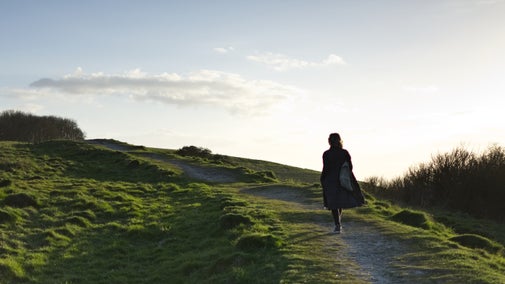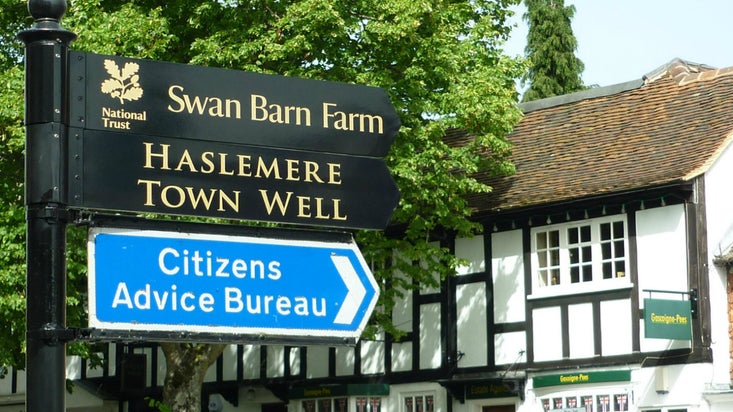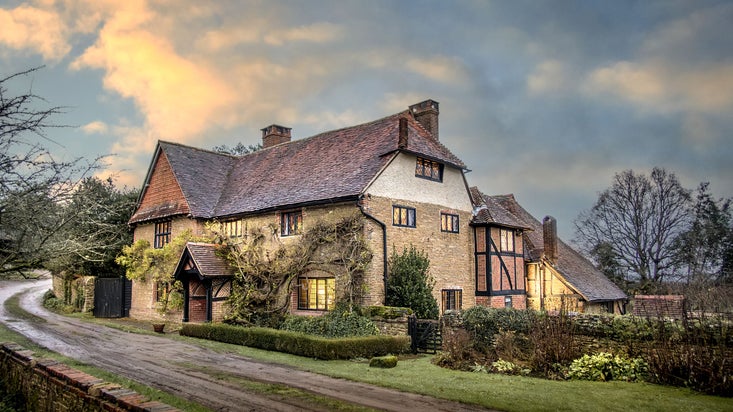
Become a member
Join today and help protect nature, beauty and history – for everyone, for ever. Enjoy access to more than 500 places with National Trust membership.
A quiet retreat of woodland and pasture only 30 seconds from Haslemere High Street
Swan Barn Farm, Collards Lane, Haslemere, Surrey, GU27 2HU

| Asset | Opening time |
|---|---|
| Countryside | Dawn - Dusk |
Several kissing gates and the terrain is seasonably unsuitable for buggies or wheelchairs. No toilets.
Swan Barn Farm, Collards Lane, Haslemere, Surrey, GU27 2HU
Swan Barn Farm nestles behind Haslemere’s bustling high street. It is the gateway to some of Surrey and Sussex’s finest countryside.You can enjoy a picnic and catch a glimpse of views down into pastures cloaked by a wooded valley.
For keen walkers there are three major walks nearby. The first is the 64-mile-long Serpent Trail, which starts here. It was designed to showcase some of the finest views and breathtaking countryside in the south east. The footpaths also link to the nearby Sussex Border Path and Greensand Way.
Swan Barn Farm has a specially designed eco-house called Speckled Wood which was built with locally sourced, sustainable wood from the Black Down Estate. Next to it is the Orchard House, which was built in the same way with help from volunteers. The buildings are not open to visitors but you're welcome to view them from the outside from the public footpath and the orchard.
A hungry herd of black & white Belted Galloway cattle often graze the fields to ensure the pastures stay rich in flowers and scrub doesn't take over. In the orchard traditional breeds graze in to manage the grassland.
As each new season arrives, so to do new things to see and do, different flora and fauna to be seen and heard, and fresh food to be foraged.

Explore the South Downs for breathtaking landscapes, historic sites, and family-friendly activities. You can visit iconic spots like Devil's Dyke, Birling Gap, and Saddlescombe Farm for restorative time in nature

Follow this circular walk passing through an orchard, meadows and woodland, before returning to the historic market town of Haslemere.


A charming country retreat on the edges of the South Downs.
Sorry, there are no upcoming events at this place
The hidden gem of Swan Barn Farm nestles behind Haslemere’s bustling high street. It is the gateway to some of Surrey and Sussex’s finest countryside.
You can enjoy a picnic and catch a glimpse of views down into pastures cloaked by a wooded valley. For keen walkers there are three major walks nearby. The first is the 64-mile-long Serpent Trail, which starts here. It was designed to showcase some of the finest views and breathtaking countryside in the south east. The footpaths also link to the nearby Sussex Border Path and Greensand Way.
Swan Barn Farm has a specially designed eco-house called Speckled Wood which was built with locally sourced, sustainable wood from the Black Down Estate. Next to it is Hunter Basecamp, which is used for a variety of events and volunteer activities.
Important info:
The buildings are not open to visitors but you're welcome to view them from the outside from the public footpath and the orchard.
Find out how and why we have been coppicing woodland at Witley Copse, and more about the practice itself, in particular the benefits it holds for both plants and wildlife.


Join today and help protect nature, beauty and history – for everyone, for ever. Enjoy access to more than 500 places with National Trust membership.
By sharing your email address you’re agreeing to receive marketing emails from the National Trust and confirm you’re 18 years old or over. Please see our for more information on how we look after your personal data.